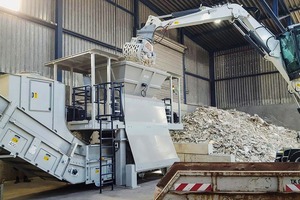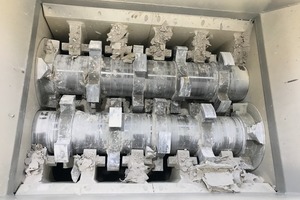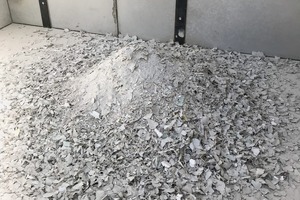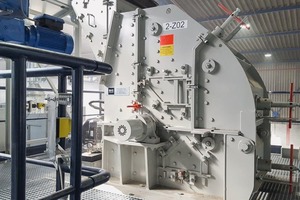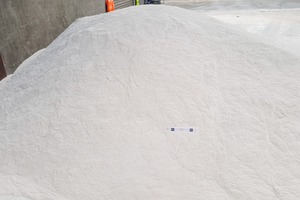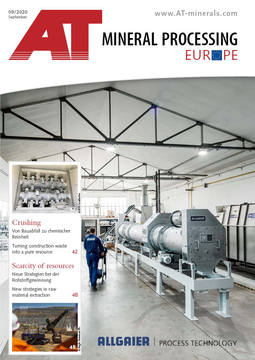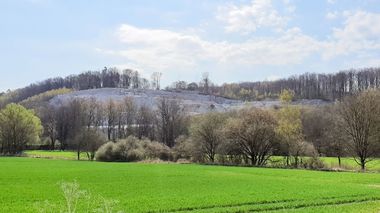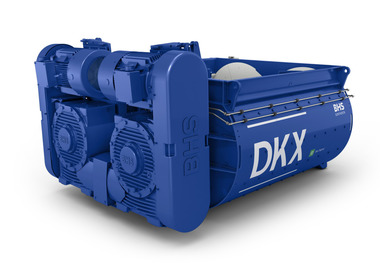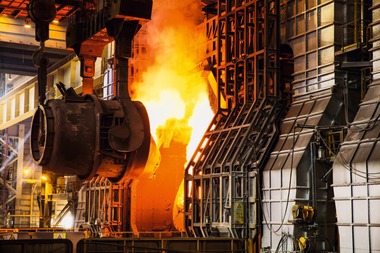Turning construction waste into a chemically pure resource
EU regulations, coal phase-out and construction boom are among the many reasons these days for making the recycling of gypsum highly attractive. However, the process needs to be cost-efficient. BHS-Sonthofen developed a process that entails two crushing stages. This makes it even possible to recycle any adhering impurities.
Gypsum is a very popular building material. It is not only used in the cement industry, but above all for indoor refurbishing projects. Construction is virtually unthinkable without gypsum, whether as solid gypsum, gypsum plasterboard or gypsum fiberboard. There are many good reasons for this: Gypsum does not burn, is easy to process, acts as a sound insulator and has a positive impact on the indoor climate. The consumption of this raw material has been increasing over recent years, not least due to the current boom in the construction business.
Gypsum shortage due to coal phase-out
For a long time now, the gypsum used is not procured solely through mining. A significant share – called FGD gypsum – is produced, at least in Germany, as part of flue gas desulfurization in coal-fired power plants. However, Germany is set to completely shut down its coal-fired power plants by no later than 2038. As early as 2030, Germany will likely produce only half as much FGD gypsum as today. This will result in a significant supply shortage in view of increasing demand.
Gypsum waste recycling is the solution
At the same time, sustainability is also becoming more and more important in the construction materials industry. This is due to political regulations, among other reasons. The EU issued a directive in 2008 requiring member states to achieve a 70 % recycling rate for construction and demolition waste by the end of 2020. Another directive also stipulates that gypsum waste must be landfilled separately from biological waste in separate cells. This makes disposal an expensive proposition. What’s more, the decomposition of natural gypsum represents an intervention in nature that can be avoided.
Given this backdrop, there are many reasons why it is high time to introduce an efficient process that allows gypsum waste to be recovered economically. A recycling system can prevent a shortage of gypsum, while saving construction companies high disposal fees.
A daunting task
Gypsum waste is generated in various places, such as during the production of plasterboard and other gypsum products. In particular, gypsum waste generated on construction sites or during demolition work contains numerous other substances in addition to gypsum. This includes screws and nails, wood, wallpaper or steel lattice scraps as well as pieces of brick. However, many machines cannot process such a varied feed material. Moreover, it is often difficult to separate the materials according to type. This task requires a sophisticated system comprising consecutive sorting technology. The end product must be of such high quality that it presents a real alternative to FGD or natural gypsum. In addition, the efficiency of the procedure remains a basic prerequisite.
Maximized gypsum yield with the BHS process
The process experts at BHS developed a complete system whose individual components are optimally aligned towards cleanly separating the gypsum from other components of the feed material. To ensure maximum efficiency, the remaining fractions should also be cleanly separated by type and made available for recycling. The system implements a two-stage process for this purpose: A combination of tearing technology and impact crushing prepares the material for classification. The core components of the system are the two shredding loops.
Two crushing stages result in clean separation by type
A two-stage process with pre-shredding, for which BHS uses the pre-shredder of type VSR, represents a new take on recycling gypsum waste. The VSR is a two-shaft shredder. Its two shafts are equipped with tearing tools. The fed gypsum boards fall down and out of the machine as soon as they have been processed to the desired size. The decisive advantage of this technology is that in contrast to cutting machines, the pre-shredder can handle the metallic impurities in the feed material. Overhead magnets, zig-zag sifters and various screening cycles already pre-sort the material after the first shredding stage. Larger metal parts that might interfere with the further recycling process are thus collected in separate containers.
In a second crushing stage, an impact crusher (type PB) with a horizontal shaft separates the gypsum particles from adhering impurities. This allows the plaster to be cleanly separated from cardboard residues, wood fibers and small metal parts. Ivan Glamuzina, Senior Project Manager in the Recycling & Environment division at BHS, sees the strength of the overall process in the combination of the two processes: “Gypsum boards have strongly adhering cardboard elements and many other impurities, which is why they represent a real challenge to recycling technology. BHS is one of the few manufacturers to have mastered both the tearing and the impact process. This allows us to optimally combine the advantages of different machine types and to ideally align all components with one another.”
The fine, multi-stage classification step yields various fractions of high purity. Thanks to this smart process, BHS has succeeded in preparing not only gypsum but also the paper and metal contained in the gypsum waste for recycling in a highly efficient manner.
Chemically pure gypsum
The recovered gypsum (RC gypsum) is chemically identical to natural gypsum. Therefore, the recycled material can be used in any desired application. An RC gypsum content of up to 70 % is already common practice in cement production today. Manufacturers do not take any risks and tend to gradually move towards larger proportions of RC gypsum as far as the quality of gypsum plasterboards is concerned. But even today the RC gypsum content of these boards is up to 25 %. Initial tests performed with an RC gypsum share of 40 % have been showing promising results. There is no loss of quality compared to products made of non-recycled material. In view of the current developments in environmental protection and the growing construction industry, Ivan Glamuzina is confident: “The recycling of building materials – especially gypsum – will become increasingly important in the coming years. The two-stage process reliably provides our customers with a cost-efficient means of obtaining a high-quality product.”
Author:
Alfred Weber, Sales Director, Recycling & Environment Division, BHS-Sonthofen
www.bhs-sonthofen.de
Alfred Weber has more than 30 years of experience in sales of recycling technology. The process engineer has been working for BHS-Sonthofen for 17 years.


